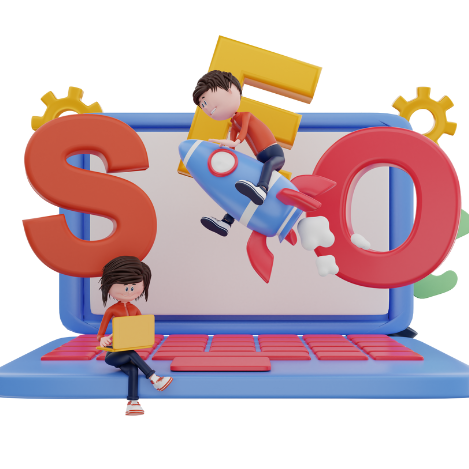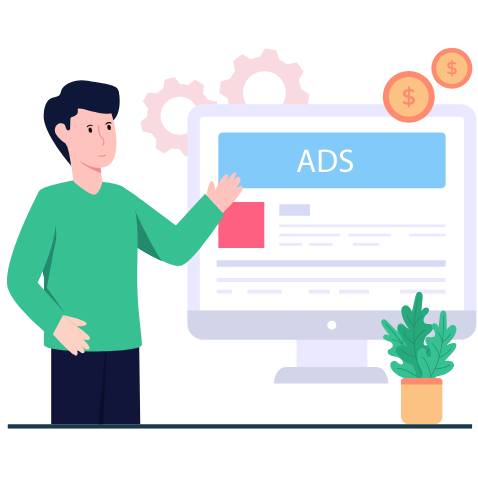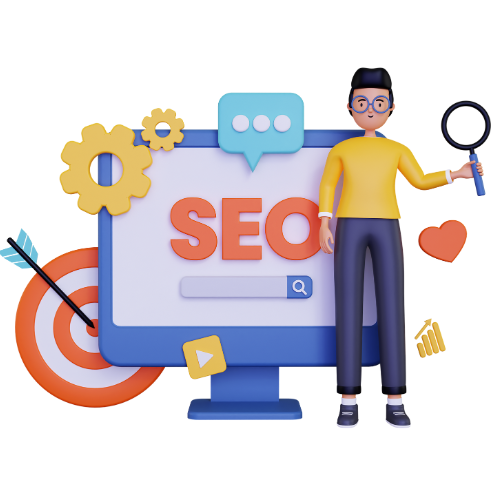In 2025, businesses will have more options than ever to choose how they promote themselves online. Should you lean more on a solid SEO strategy, or should you pour your budget into paid ads? As you plan your marketing approach, it’s natural to ask: which gives a better return? This discussion is especially relevant if you’re looking for good marketing tips or working with a digital marketing agency in Santa Clara (or anywhere).
It helps to define our terms. By paid ads, I mean the kind of advertising where you pay per click, per impression, or per conversion; think Google Ads, Facebook Ads, etc. Meanwhile, SEO (search engine optimization) is about doing the work so your website ranks higher “organically” (without direct payment per click).
What Is ROI (Full Form), And Why It Matters
First, let’s understand ROI, which stands for Return on Investment. You measure how much you gain (in revenue, leads, or desired results) from what you spent. If you spent $1,000 and earned $5,000 more in profit, your ROI is 400%; you got back 4X what you invested.
Marketers love ROI because it’s a clear yardstick. If your SEO work or your paid ads spend can’t beat the ROI of other options (or your baseline), you need to rethink your strategy.

The Strengths & Weaknesses: SEO Strategy
Pros of SEO
- Long-Term Value
SEO is not instant, but once your pages rank for target keywords, they can keep bringing traffic over months or years. It’s like planting seeds that grow over time. - Lower Cost per Click in the Long Run
You don’t pay for each click (beyond your investment in content, tools, and SEO services). Over time, after initial setup, your marginal cost per lead can drop. - Trust & Authority
Many users trust organic search results more than paid ones. When you rank high naturally, people perceive authority. In 2025, especially, trust and credibility matter more than ever. - Synergy & Compounding: The work you do for SEO, content, backlinks, and site structure can support other marketing efforts. Also, good organic performance boosts brand awareness, which makes your paid ads more effective. Some studies even show paid ads help organic traffic (spillover).
Cons of SEO
- Slow to Show Results
You often need months before you see meaningful gains. In many cases, a positive ROI is seen in 6 to 12 months. - Effort & Ongoing Work
SEO is not “set and forget.” You must keep optimizing, updating content, building links, and adapting to algorithm changes. - Competitive Landscape
In saturated markets, ranking for valuable keywords may require high investment in quality content, technical SEO, and outreach.

The Strengths & Weaknesses: Paid Ads
Pros of Paid Ads
- Immediate Visibility & Speed
Once your campaign is live, you show up in front of your target audience. If you want quick leads (for a launch, seasonal promotion, etc.), paid makes sense. - Control & Targeting
You choose where your ad appears, who sees it, when, and at what budget. You can test messaging fast, adjust bids, and pause campaigns. That control is powerful. - Scalable for Short-Term Goals
If you have budget flexibility, you can scale up or down depending on performance.
Cons of Paid Ads
- Cost & Diminishing Returns
Cost-per-click (CPC) keeps rising, especially in competitive niches. As soon as you stop paying, your traffic stops. - Ad Fatigue & Optimization Required
People get blind to ads. You must constantly refresh creatives, monitor campaigns, and tweak targeting. - Risk of Inefficient Spend
Poorly targeted ads or weak landing pages can waste money. Also, fraud and invalid clicks can reduce ROI.

SEO vs Paid Ads: What the Data Says in 2025
Let’s look at real-world numbers and trends to see which often gives better ROI.
- In trades (HVAC, plumbing, etc.), one study found SEO had an ROAS (return on ad spend) of ~19.9x, while paid ads delivered ~4.4x. In other words, SEO gave nearly 5× better return.
- Many sources estimate that strong SEO campaigns in 2025 can deliver 500% to 1,300% ROI after a year or more of work.
- In comparisons across industries, SEO often converts at higher rates than PPC (paid ads). For example, in legal, real estate, and manufacturing, SEO outperformed PPC conversions by wide margins.
- On the flip side, some analyses note that with equal investment, paid ads sometimes deliver faster ROI; e.g., $2 earned per $1 spent, but this varies heavily by niche and campaign quality.
From the data, the pattern is: SEO is a more efficient long-term investment; paid ads often deliver faster but less sustainable returns if used in isolation.
When Paid Ads Are the Smarter Move (or Necessary)
Don’t dismiss paid ads. There are scenarios where they make sense and even are essential.
- You need quick results: A business launch, flash sale, seasonal push, one doesn’t have months to wait.
- Testing demand: You’re validating a new product or offer. Ads let you test messaging, positioning, and keywords fast.
- Competitive or low-traffic niches: If organic keyword volume is low or competition is too strong, paid ads might be the more viable route initially.
- Support SEO & Retargeting: Use paid ads to retarget users who visited your site via SEO, or to amplify high-performing content.
In such cases, paid ads act as a catalyst, not the entire fuel tank.

Blending SEO & Paid Ads: Best Strategy for 2025
The best results often come from combining both arms. A few strategic ways:
- Use paid ads early, while SEO takes root
You get immediate traffic from ads, and meanwhile, your SEO work builds a foundation for future organic visits. - Feed insights across channels
High-converting keywords from paid campaigns can inform your SEO content plan. Likewise, high-ranked SEO pages may show topics worth promoting via ads. - Retarget SEO visitors with ads
Someone who lands on your site through organic search but didn’t convert can be retargeted via ads to bring them back. - Allocate budgets dynamically
If your paid campaigns yield strong ROI, temporarily shift more budget there, but don’t abandon SEO entirely. - Monitor & adjust based on true ROI
Use correct attribution models (especially since GA4 has changed attribution logic) to understand which channel brings real conversions.
In 2025, the “SEO vs paid ads” debate is less about one or the other and more about balance and smart integration.
What Matters Most: Your Industry, Use Case & Execution
No blanket answer fits all. Here’s how to think through:
- Industry and niche: In some niches (like legal, real estate), SEO tends to outperform paid ads by big margins.
- Customer value & lifetime value (LTV): If each customer is worth a lot over time, investing in SEO may pay off better in the long run.
- Budget & cash flow: If you can’t sustain a high ad spend, SEO gives longer-term traction. If you have a marketing budget and need speed, paid ads help you bridge the gap.
- Strength of execution: Poor SEO or poorly structured ads yield low ROI. The key is doing well, optimizing landing pages, writing good content, doing keyword research, and testing ads.
SEO Tips to Boost ROI in 2025
- Focus on user intent over just keywords. Understand what people want when they search.
- Produce high-quality, helpful content that addresses searchers’ needs.
- Optimize site speed, mobile experience, and technical SEO.
- Use internal linking, semantic clusters, and content hubs.
- Build relevant backlinks from trusted sites.
- Monitor performance, update old content, and fix broken links.
- Use analytics and attribution tools (e.g., GA4) to track true conversions.
Working with a good SEO agency or digital marketing services firm helps you implement these well, especially if you don’t have in-house expertise.
Paid Ads Tips to Protect ROI
- Start small, test heavily (A/B testing headlines, visuals, calls to action).
- Match ad copy closely with landing page messaging to reduce bounce.
- Use audience targeting, exclusions, and schedule control.
- Watch your quality score (on Google) to lower CPC.
- Exclude irrelevant traffic and fraudulent clicks.
- Refresh creatives to avoid ad fatigue.
- Monitor cost per acquisition (CPA) and adjust bids to maximize returns.
Working with a digital marketing agency skilled in paid media ensures campaigns are well run and efficient.
Which Brings Better ROI in 2025?
If you have to pick one, SEO is your foundation for stable, compounding ROI over the longer term. Paid ads are powerful for short-term gains, testing, and tactical pushes. But smarter is combining both strategically.
So, in 2025:
- SEO strategy should be your backbone if you seek sustained, scalable growth.
- Paid ads complement that backbone, giving you flexibility, speed, and control when needed.
- Digital marketing services or agencies (especially ones familiar with your market, such as a digital marketing agency in Santa Clara) can help you integrate these well.
If you’re starting, consider splitting your investment: perhaps lean more to paid ads initially to generate leads, but don’t delay investing in SEO, so over time you reduce dependence on paid spend.
When you choose to move forward, pick partners who understand both sides: SEO + paid, and can see the big picture. Be wary of anyone pushing only ads or only SEO without a thoughtful strategy.
If you’d like help executing this in your business, especially if you’re based in or interested in a partner located in Santa Clara or beyond, reach out to:
Skysail Digital Marketing Agency
- Services: SEO strategy, paid ads management, full digital marketing services
- An expert team to guide you with marketing tips, SEO tips, and campaign execution